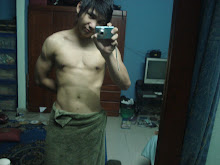Muscles (anterior view): fibrous organs that produce motion by contracting.
Orbicularis oculi: circular muscle of the eyelids.
Obricular oris: circular muscle of the lips.
Serratuf magnus: finger-shaped muscles between the ribs.
External Oblique: muscle whose fibres are oblique in relation to the body when it is standing.
Abdominal rectus: abdominal muscle with vertical fibres.
Tensor of fascia lata: muscular membrane that stretches and thightens.
Great adductor: muscle whose movement runs parallel to the plane of symmetry of the body.
Gracilis (slender): vertical muscle of the inner thigh.
Lateral great: large muscle of the outer thigh.
Gastrocnemius: the two muscles of the calf.
Soleus: extensor muscle of the foot.
Anterior tibial: muscle of the leg below the knee.
Long peroneal: muscle below the peroneals and above the metatarsals.
Medial great: large muscle of the outer thigh.
Straight muscle of thigh: vertical muscle above the knee.
Sartorius: muscle that pivots the lower leg on the thigh and the thigh on the pelvis.
Gluteus medius muscle: muscle of the buttock.
Flexor digitorum superficialis muscle: muscle that flexes the fingers.
Short palmar: small muscle controling the palm of the hand.
Long palmar: large muscle controlling the palm of the hand.
Brachioradial: muscle used to rotate the hand.
Biceps brachi: an arm muscle with two points of attachment.
Greator pectoral: bulky chest muscle.
Deltoid: triangular shoulder muscle used for abduction of the arm.
Trapezius: back muscle between the scapula and the spinal column.
Sternocleido mastoid: neck muscle connecting ther sternum to the clavicle and relative to the mastoid process.
Tuesday, March 1, 2011
Subscribe to:
Post Comments (Atom)





No comments:
Post a Comment